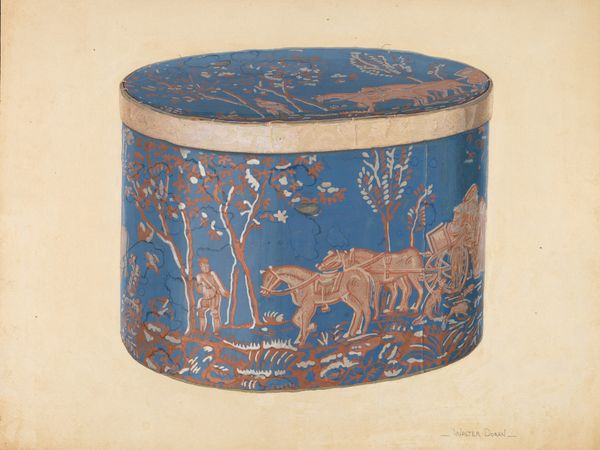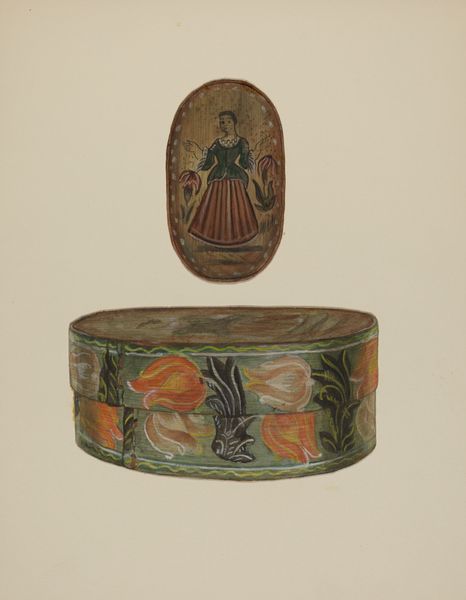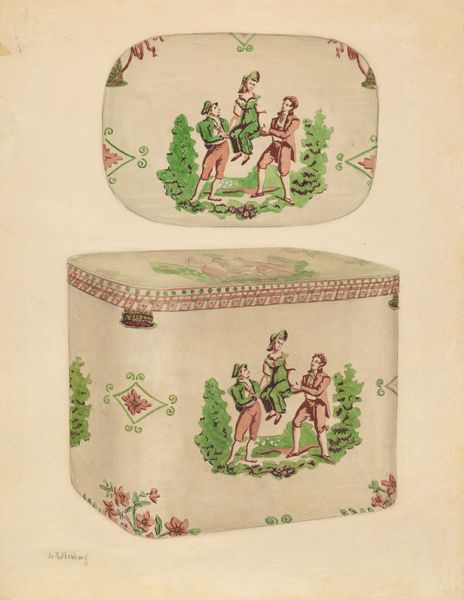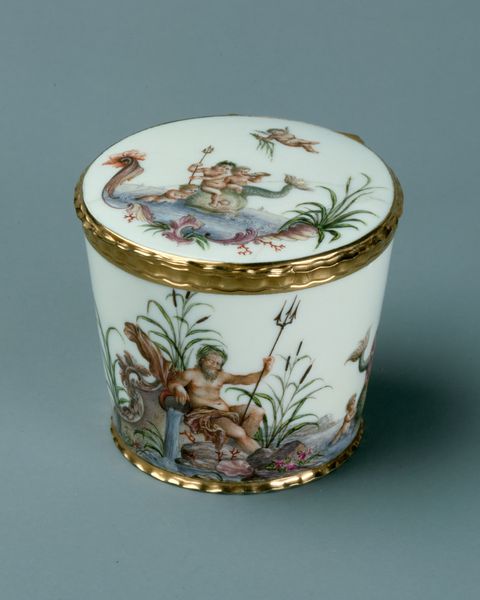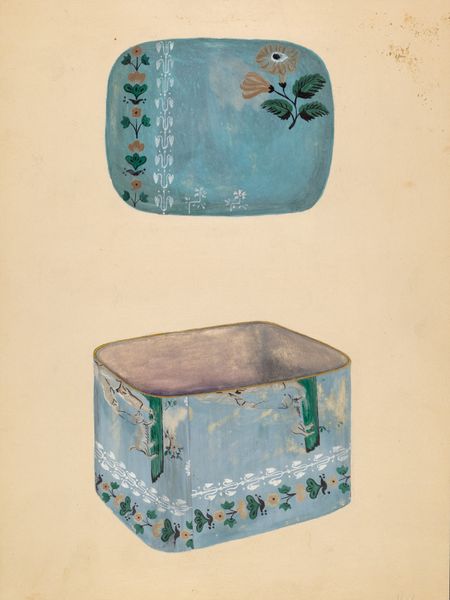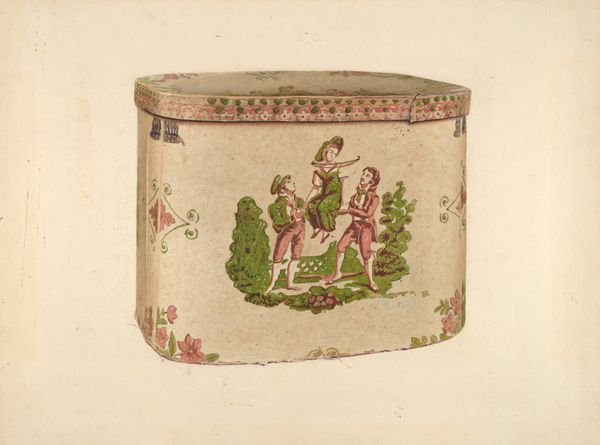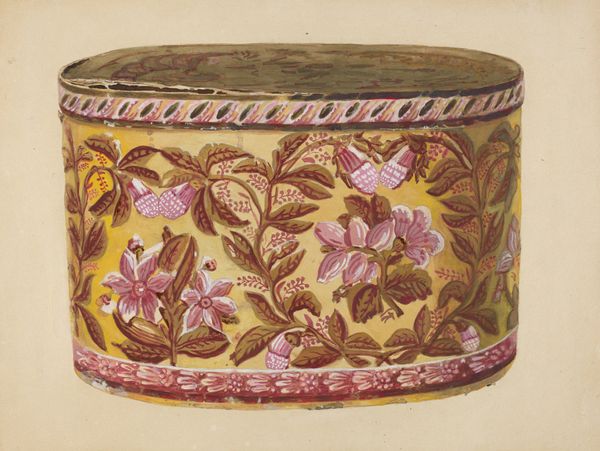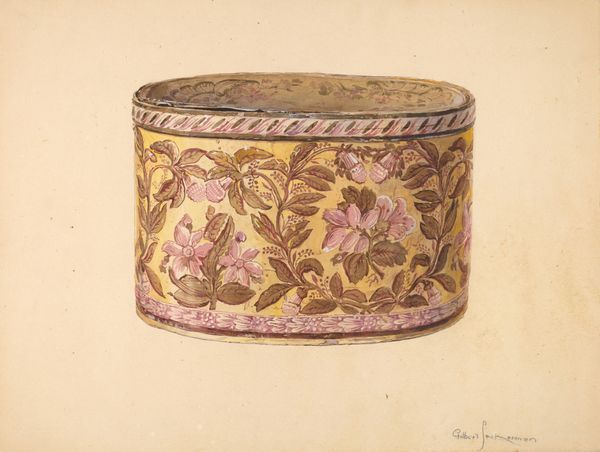
drawing, painting, ceramic, watercolor
#
drawing
#
painting
#
ceramic
#
watercolor
#
ceramic
#
watercolor
Dimensions: overall: 29.2 x 22.9 cm (11 1/2 x 9 in.)
Copyright: National Gallery of Art: CC0 1.0
Curator: This watercolor and ceramic artwork is titled "Bandbox" and dates back to around 1953 by Paul Farkas. Editor: The piece features a pastoral hunting scene repeated on the box and its lid. The simple color palette gives it a vintage feel. How can we look at this artwork with a deeper understanding of its materiality and the social context? Curator: Given that Farkas was primarily a textile designer, this image makes me immediately consider the relationship between art and craft. The imagery clearly suggests the lifestyle of landed gentry, engaged in leisure and hunting, which is replicated by workers using what medium and materials, and for whose consumption? Is it art when adorning textiles versus art painted on canvas, given the labour and processes involved? Editor: That's a very interesting way to frame it! So, instead of seeing it as just a pretty picture, we're really considering the labour involved and the intended market for an object like this. But if he's a textile designer why not focus on that? Curator: The piece forces us to confront the divisions we often impose on creative expression. Focusing solely on, say, a painting, can obscure the immense amount of skilled labor that went into other crafted objects such as textiles for everyday use. So we have to ask: Whose labour are we valuing, and why? It encourages us to challenge traditional artistic hierarchies. What kind of person purchases something like this, do you imagine? What are the social cues or capital that come with such an item? Editor: Right. It makes you consider what's considered "high art" and why something decorative might be seen as less significant when it is clearly as labor-intensive as fine art production! I see your point, understanding the social context in conjunction with how things are made adds so much more depth. Thanks! Curator: Precisely. Examining the social and material conditions helps us break down those artificial distinctions, wouldn't you say?
Comments
No comments
Be the first to comment and join the conversation on the ultimate creative platform.

